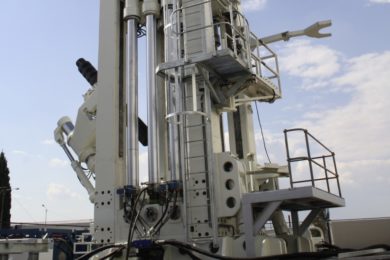Nuclear power remains the least price sensitive of baseload fuels for global power generation and that should underpin investment in uranium mining in Australia to satisfy future global energy needs, according to uranium explorer and developer, Toro Energy. Addressing a Chinese investment forum in Adelaide today, Toro Energy’s Managing Director, Greg Hall, said price and security of supply would be the main driver of the future energy mix. If you double the cost of the basic fuel material used in various power generation techniques, nuclear power is the least price sensitive – and therefore delivers the best potential to absorb price increases while maintaining electricity prices, allowing solid returns on investment in long-term viable power. At the same time, Alliance Resources announced that the Australian Government has approved the Four Mile uranium mine.
“Doubling the price of uranium used in power generation will only lead to a 4% increase in the price of electricity generated from that nuclear power source. The cost escalation rises to 40%, however, if the coal price doubles, and rises above 70% if the gas price is doubled. It is a scenario which is difficult to argue against in terms of the world’s capacity to meet sustainable long-term, affordable and ideally greener baseload energy expectations.”
Hall also warned today that new uranium mine supply must continue to expand aggressively by around 32% to meet nuclear energy demand projections in just the next six years. “In 2006, all global sources of uranium produced 73,300 t of U3O8, yet the demand curve suggests a need for 150,000 t of U3O8 by as early as 2015 but we will struggle with an output capacity by then of only 100,300 t,” Hall said. “Invigorated new Australian uranium production can help bridge that demand-supply gap.”
Hall told delegates Toro expected to this quarter complete its current optimisation study on the company’s 24.4 Mlb U3O8 resource at Wiluna in Western Australia. Also, a scoping study is currently underway on Toro’s 7.4 Mlb U3O8 resource at Napperby, northwest of Alice Springs and should also be completed this quarter.
“The recent resource upgrade at Wiluna is expected to substantially improve the economics of the project, which is being evaluated as part of the optimisation study,” Hall said. Toro Energy has set a target date of first production at Wiluna in 2012-2013, moving to steady production in 2014.
Australia’s Federal Environment Minister Peter Garrett said the approval of the Four Mile uranium mine in South Australia was a difficult decision. “I have not taken this decision lightly … this mine was subject to a comprehensive, scientifically robust and transparent assessment process,” Garrett said in a statement.
“Following this thorough assessment and careful consideration, I am certain this operation poses no credible risk to the environment.”
Quasar Resources owns 75% of the Four Mile project, with Alliance Resources holding a 25% stake in the mine, near the existing Beverley uranium mine in SA’s north, where the ore will be processed.
Garrett said the Four Mine proposal was subject of two independent reviews. “Both reviews concluded the mining operation could go ahead without any significant lasting impact on the identified environmental values of the area and that the proposal represents world best practice in uranium mining.” He also said the mine’s owners would have to demonstrate environmental outcomes were being met under a stringent monitoring regime. “These strict monitoring requirements will remain in place well after the mine ceases its operation in order to ensure the long term protection of the environment,” he said.









